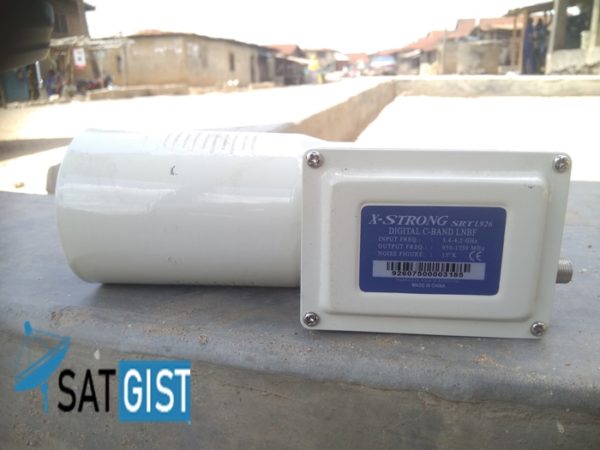Table of Contents
Today’s post will be base on how to choose the best C-band LNB for weak satellite signals. Many people got confuse to choose the good C-band LNB for the reception they find themselves. One of the best way to choose the best C-band LNB for weak satellite signal is to check the parameters written on the C-band LNB and lets critically examine them one after the other.
Input Frequency
Range from 3.4 to 4.2GHz
Previously, Satellite tv providers was using DVB-S to transmit signal which requires bandwith range from 950-1750MHz. However, Majority of the satellite tv providers now using DVB-S2 as technology improved using 950-1525MHz as mobile network towers also using same frequency for both 3G or 4G Nework transmission and thereby experience freezing on some transponders fall within frequency 3400 to 3700.
Range from 3.7 to 4.2GHz
Minimum bandwidth are used when transmitting with DVB-S2 as the latest and adopted technology. Even most of the satellite tv receivers available nowadays are fully DVB-S2 compliant. Similarly, majority of the C-band LNB’s are fully compliant with 3.7 – 4.2GHz as input frequency.
Temperature Or Noise Figure
Temperature or Noise Figure also determine the quality of the C-band LNB usually measured in units called Noise Temperature. So, To choose the best C-band LNB for satellite weak signal, You have to select C-band LNB with low Noise factor or Low Noise Temperature which depends on the satellite gain received at your reception. The following are the example of C-band LNB with their recommendations.
For Low Gain Satellite Signals
| C-band LNB’S | Noise Temperature | Recommendations |
| Type 1 | 13K | Very Good |
| Type 2 | 15K | Good |
| Type 3 | 17K | Good but miss some TP’s |
SEE ALSO:
- Why A.F.A Sport Fail To Show UEL Cup?
- Where To Watch U-20 World Cup?
- How To Increase Satellite Signal By 10-15% On KU/C-Band Dish
- DirecTV VS Dish Network (2019) Review, Price And Plans
- Satellite Dish Not Working: Why And How To Fix The Problems
- How To Adjust DStv/DirecTV Satellite Dish To Get Better Signal
For High Gain Satellite Signals
| C-Band LNB’s | Noise Temperature | Recommendations |
| Type 1 | 13K | Very Poor |
| Type 2 | 15K | Good |
| Type 3 | 17K | Very Good |
Polarity or Voltage 13/18V Switching
Duality or Voltage switching in the right perspective can be best described if your receiver is capable of detecting signal from these two voltage then, we can say that your satellite receiver is in good condition and you can check below table for better understanding.
| Voltage Switching | Polarity Type |
| 13-14V | Vertical |
| 17-18V | Horizontal |
Top Sites Where You Can Purchase C-band LNB
Final Verdicts
Firstly, It is highly recommend to check your satellite receiver and C-band LNB if both devices are working in good condition by checking the polarity or voltage switching as thunderstorm might be strike it and cause damage to anyone of them and thereby cause malfunctions of the two.
Lastly, Analyse the reception signal to determine the which type of LNB can work best at your reception and don’t forget to put into consideration low and high gain satellite signal.


This information on the C band Lnb specification is beneficial. There are Tps on 68.5e in C band, I have failed to track. I am using a 17K Lnb. To be specific To 3740H 30000 Discovery channel. May be if I change to 15K it may work.